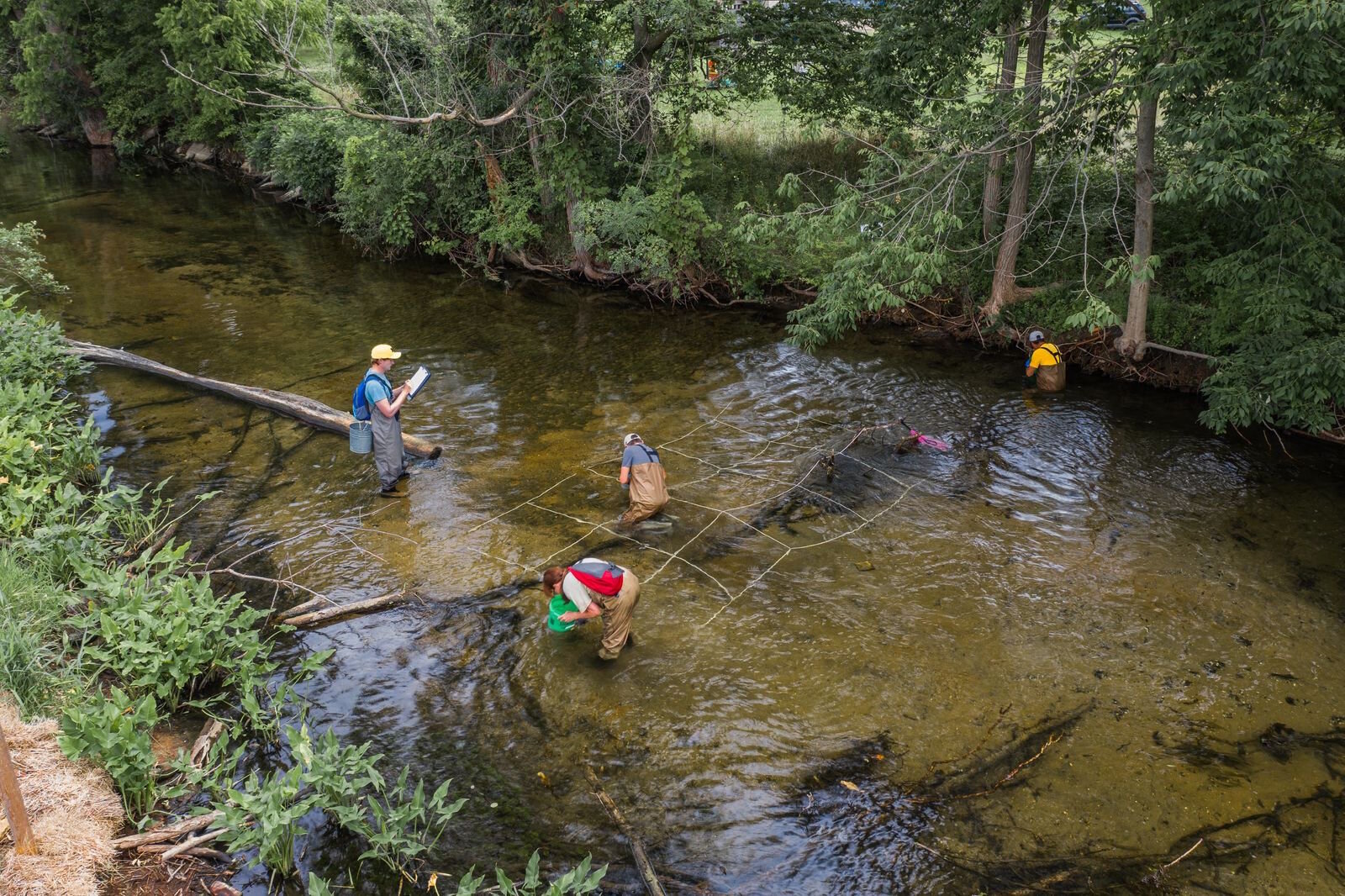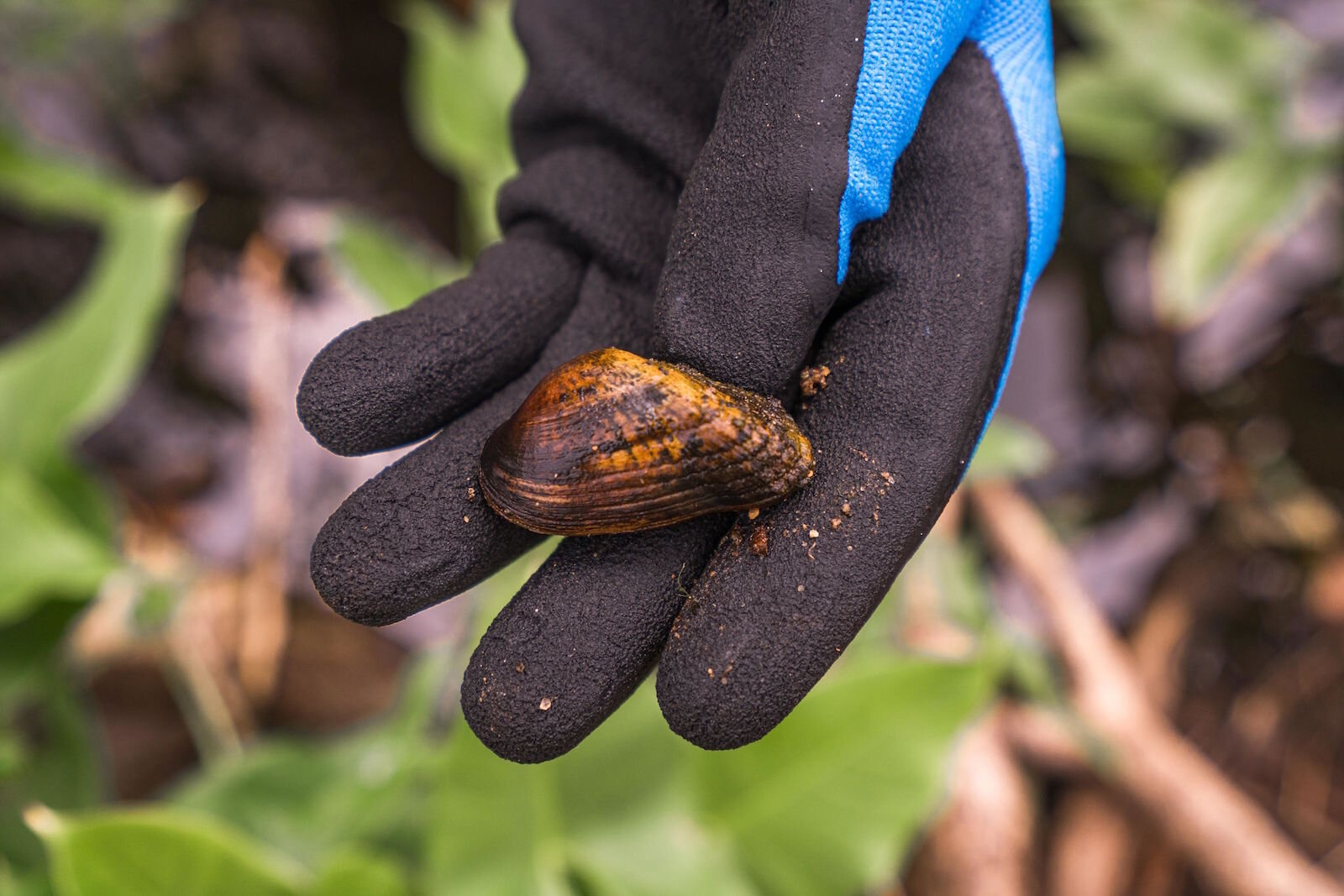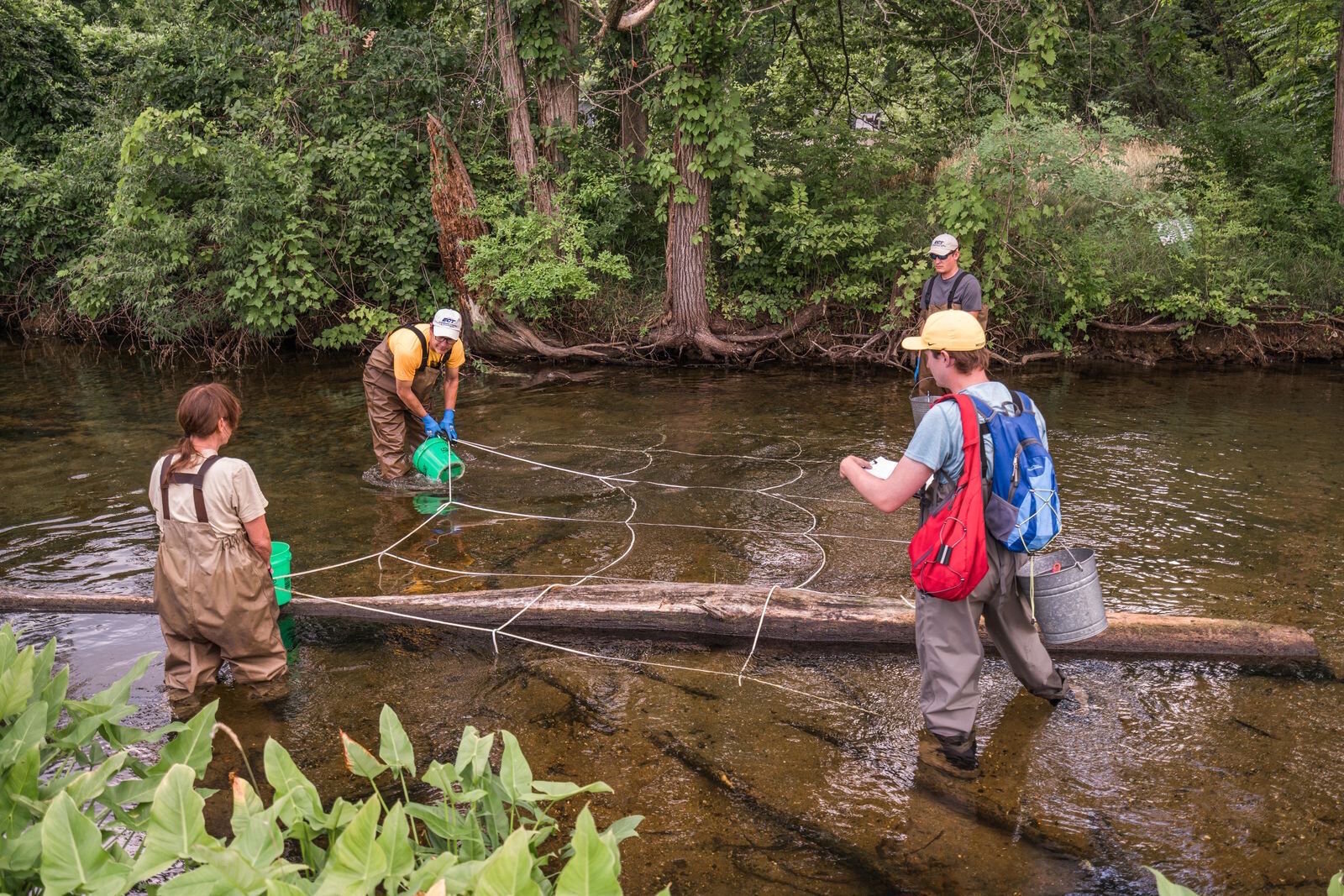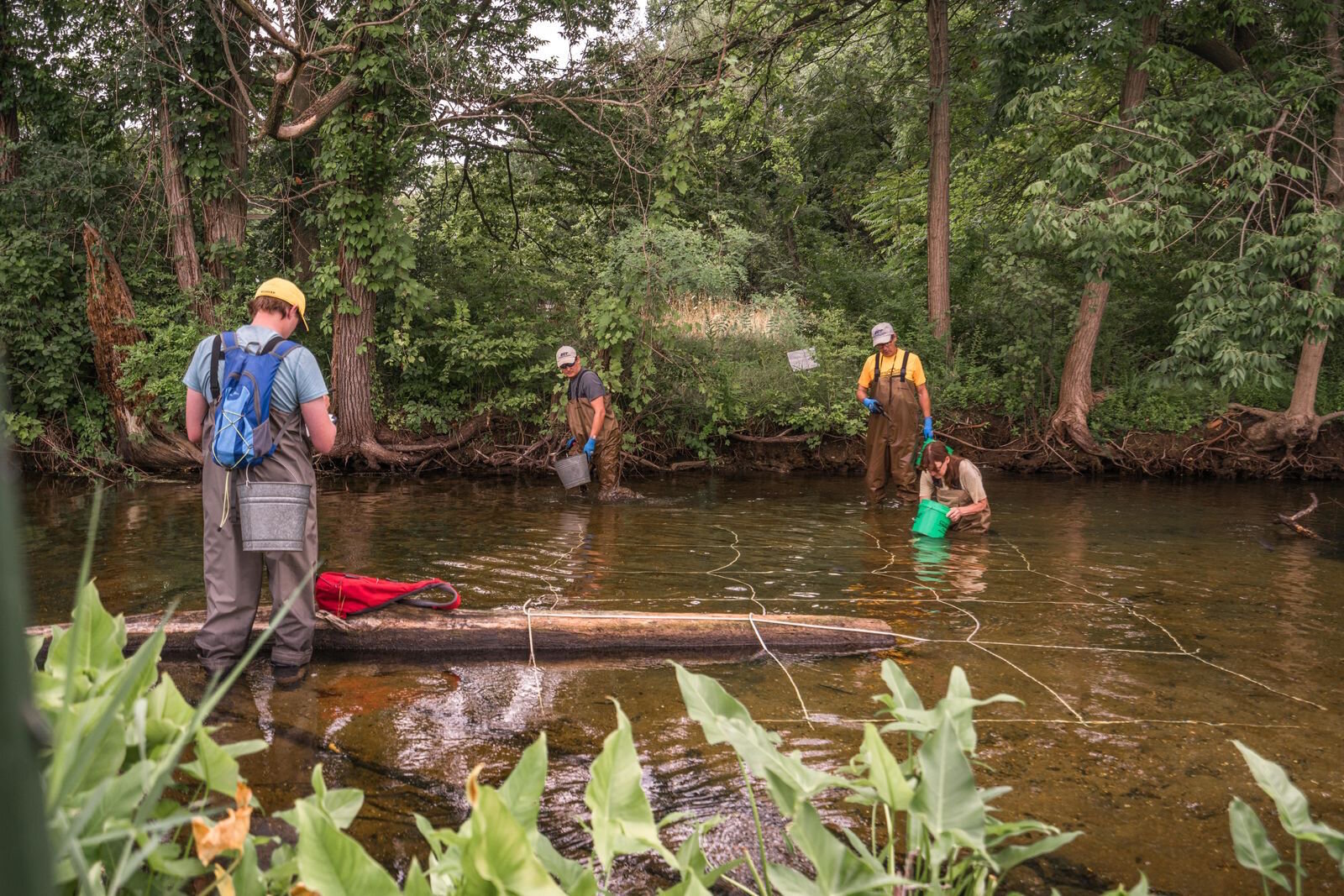An $80 million redevelopment project has uncovered a previously unknown population of snuffbox mussels.
Sometimes finding an endangered species on a commercial development site can shut down a project while ways to protect the animal are explored.
Instead, The Mill at Vicksburg, Chris Moore’s $80 million plan to transform the sprawling century-old campus into a mixed-use development, is embracing the discovery of the rare snuffbox mussel. The unique and rare freshwater mussel is native to eastern North America and listed as an endangered species — in danger of becoming extinct — in both the United States and Canada.
Environmental researchers scouring sections of Portage Creek that run along the 120-acre restoration project at the former paper mill property were excited to find this population of the endangered mussel, which previously had not been known to be in the area.
The snuffbox is a medium-sized mussel that grows to two inches and is triangular in shape. Its shell is thick and yellowish on the outside with numerous, broken, dark green rays. The mussel requires a clean, swift current as it is relatively immobile as an adult. Adults often burrow deep in sand, or gravel, except when they are spawning or the females are attempting to attract host fish that carry the mussel’s microscopic larvae on its gills until they grow and drop off. The snuffbox mussels are suspension feeders, typically feeding on algae, bacteria, detritus, microscopic animals, and dissolved organic material.

Since April, Vicksburg Mill leaders have hosted a team of research scientists to survey the creek, and now the team is evaluating this situation and providing guidance on what is the best thing to do in order to improve the habitat, not only for all creatures in the Creek but also for the conservation of the snuffbox mussel.
Marty Boote, Senior Scientist at the national environmental consulting firm Environmental Consulting & Technology, Inc. with 28 years of experience including restoration work throughout Michigan and the Great Lakes is leading the research. Boote says that the discovery of this population is important for the conservation of the species and that the population is unique in that snuffbox is not only present but abundant and the dominant species in Portage Creek.
A fellow researcher on the property, biologist Renee Mulcrone, Ph.D. of environmental consulting firm ASTI Environmental in Brighton, also was shocked at the find and unique characteristics of this newly discovered population of snuffbox. “I’ve been working on mussels my whole career and this is very exciting to find these here,” says Mulcrone.
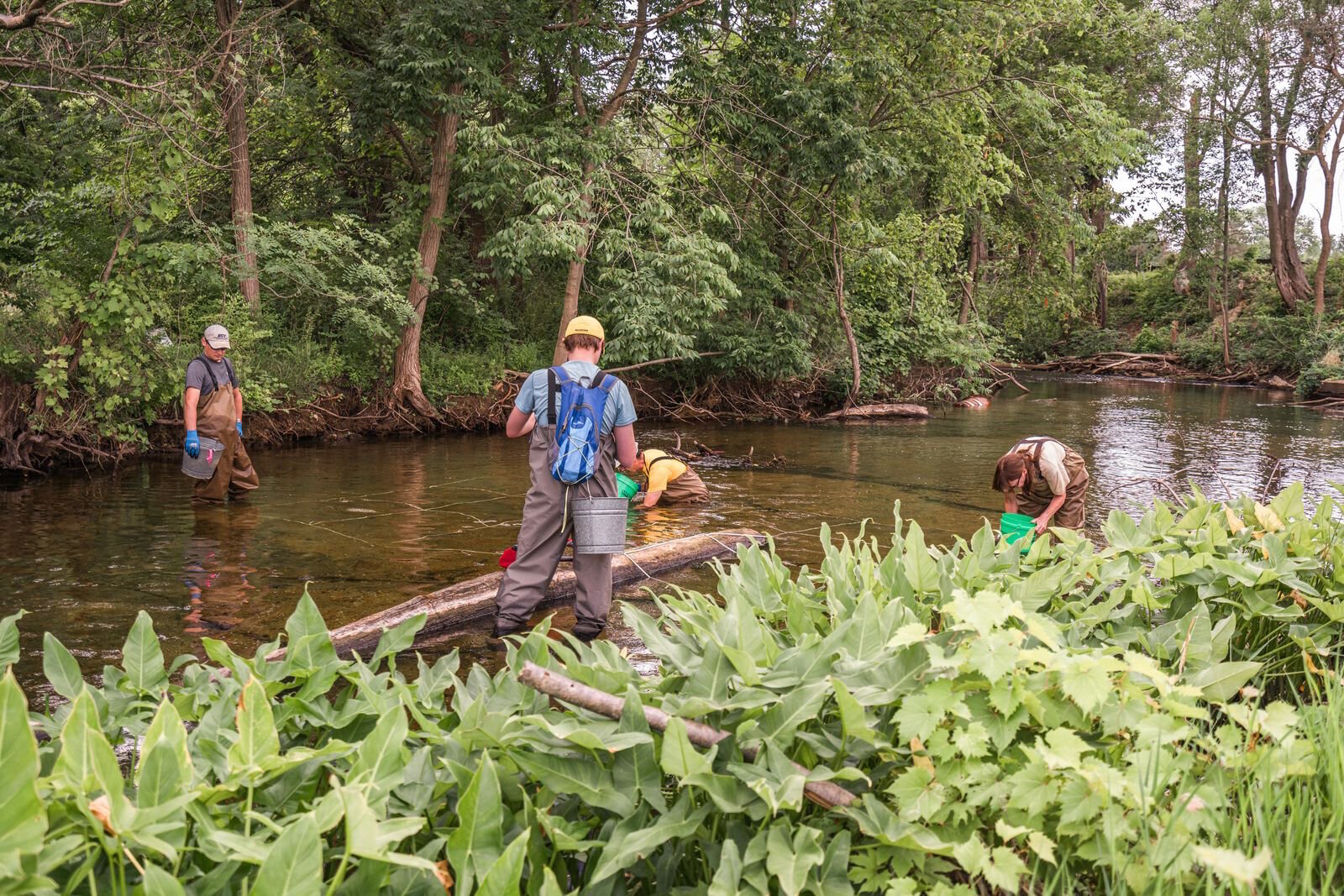
“As we’ve considered what to do with the section of Portage Creek that runs along our property, we engaged environmental experts to research the creek and advise on environmental issues we should be aware of,” says Jackie Koney, chief operations officer for Paper City Development, owners of The Mill at Vicksburg. “Very quickly in the process, it was determined that this particular section of the creek is full of very rare snuffbox mussels. My team didn’t know anything about them, but the environmental scientists are pretty stoked about this, so we’re giving it the proper attention.”
Protecting freshwater mussels includes moving them so they are out of harm’s way during construction, dredging, or other projects in the water. Mitigation is rather easy, as the mussels can be relocated to an area with suitable habitat out of impact zones.
Once the environmental survey is completed, researchers and Mill leaders will discuss the next course of action, which could include seeking state or federal grant money to help with the restoration of the creek to improve the habitat. To date, the Mill has covered all expenses associated with this research and is open to suggestions from the researchers and state and federal fish and wildlife officials.
For now, though, options are being considered such as incorporating the rare find into the Mill’s education and sustainability programming, which includes an ongoing partnership with various student classes and groups from Vicksburg Public Schools.
“We’re not entirely sure what’s going to come of all this,” Koney adds, “but, as we try to do in everything at the Mill, we’ll consider what is best for the mussels and that stretch of Portage Creek.”


